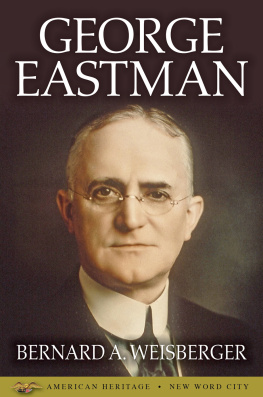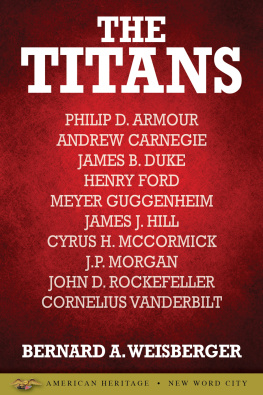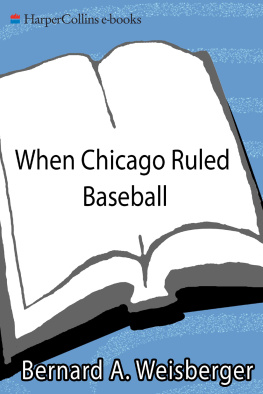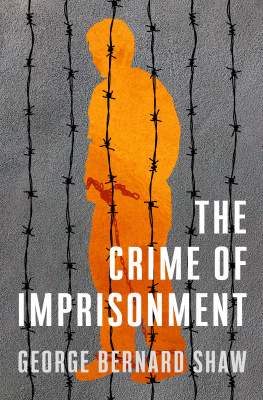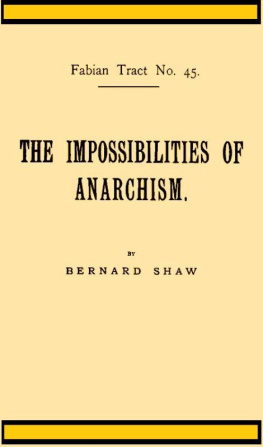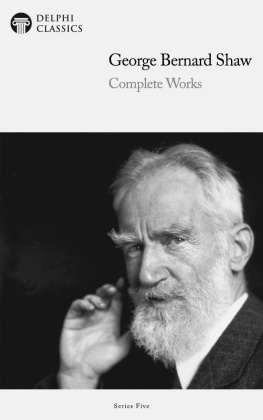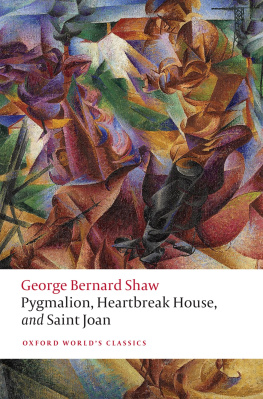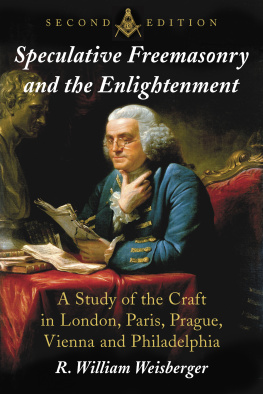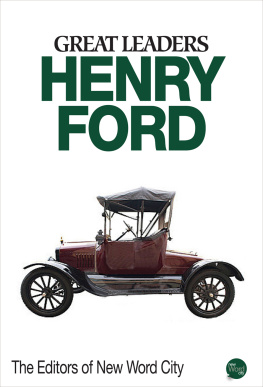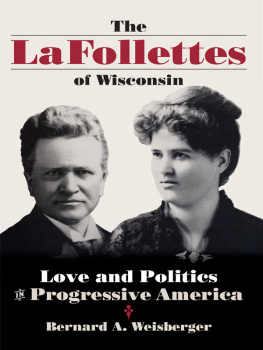Bernard A. Weisberger - George Eastman
Here you can read online Bernard A. Weisberger - George Eastman full text of the book (entire story) in english for free. Download pdf and epub, get meaning, cover and reviews about this ebook. year: 2017, publisher: New Word City, Inc., genre: Non-fiction. Description of the work, (preface) as well as reviews are available. Best literature library LitArk.com created for fans of good reading and offers a wide selection of genres:
Romance novel
Science fiction
Adventure
Detective
Science
History
Home and family
Prose
Art
Politics
Computer
Non-fiction
Religion
Business
Children
Humor
Choose a favorite category and find really read worthwhile books. Enjoy immersion in the world of imagination, feel the emotions of the characters or learn something new for yourself, make an fascinating discovery.
- Book:George Eastman
- Author:
- Publisher:New Word City, Inc.
- Genre:
- Year:2017
- Rating:3 / 5
- Favourites:Add to favourites
- Your mark:
- 60
- 1
- 2
- 3
- 4
- 5
George Eastman: summary, description and annotation
We offer to read an annotation, description, summary or preface (depends on what the author of the book "George Eastman" wrote himself). If you haven't found the necessary information about the book — write in the comments, we will try to find it.
George Eastmans inexpensive, popular camera ushered in the modern age. Here, in this essay by award-winning historian Bernard Weisberger, is his amazing and ultimately tragic story.
George Eastman — read online for free the complete book (whole text) full work
Below is the text of the book, divided by pages. System saving the place of the last page read, allows you to conveniently read the book "George Eastman" online for free, without having to search again every time where you left off. Put a bookmark, and you can go to the page where you finished reading at any time.
Font size:
Interval:
Bookmark:
In 1854, George Washington Eastman was living in the small town of Waterville, New York, with his wife and two daughters, and a third child was on the way. While the village was pleasant enough, it was seventy miles from Rochester, where Eastman had established Eastmans Commercial College, which he opened to instruct ambitious young men in Commercial Penmanship and Book-Keeping by Double Entry, as used in all branches of Trade and Commerce, Including Wholesale, Retail, Commission, Banking, Manufacturing, Shipping and Steam-Boating, Individual Partnership and Compound Company Business. The cost of Eastmans services - diploma included - was $25: An extra five allowed students to take the teachers course, which included Ornamental Penmanship in all the Ancient and Modern Hands.
On July 12, 1854, the Eastmans had their third baby, a boy they named George. Six years after that, the hard-working Eastman finally moved the family to Rochester to put an end to his long commutes. Two years later, he died. Its a shame that Eastman, professor of business, did not live to see his son grow up to become one of the far-sighted entrepreneurs who transformed the United States into a twentieth-century society. His son, the junior George Eastman would be the genius behind the first inexpensive, mass-produced camera.
Eastman spent years taking the scientific discoveries of his age and adapting them to mass-production and marketing techniques, supplying the general public a gadget that would entertain, illuminate, and bring a previously unaffordable luxury into their homes and imaginations. Like Thomas Edison or Alexander Graham Bell or Henry Ford, Eastman was able to combine his intuition, his grasp of theory, and other mens ideas to develop products that were practical, convenient, and affordable to all. Like them, too, he was able to market his invention so that it would be accessible to millions.
At first glance, Eastmans camera may not seem to have had the far-reaching social implications of the electric light, telephone, or automobile. But its important to remember that it was the camera, conjoined with electric lights and motors (inventions of Edisons), that created the movies, and that the same camera, merged with the electron gun, is responsible for television. Eastmans invention enabled home movies, videotape, cell phone cameras, and ultimately, the ubiquitous selfie.
Eastmans childhood was more or less typical of the children of his generation, though the family was hard hit financially by his fathers absence: George Washington Eastmans death left his widow almost penniless. Maria Eastman provided for her children by taking in boarders, and Emma, Ellen, and George grew up watching her struggle bitterly with the difficulties of making a comfortable home on a shoestring budget. George adored his mother and swore that he would someday repay her for her sacrifices. It became his driving ambition.
Still, it was not a bad childhood. Eastman didnt have to endure the rigors of frontier farming or the hardship of shooting wild game to feed his family. He was a city boy, a quiet, unexceptional student but one with great imagination and a desire to succeed. He had a knack for tinkering and a fondness for money-making ventures, even at an early age. Once he constructed an ingenious puzzle out of wires. An admiring friend asked if he could have it, but young George demanded, and got, cash - reputedly a dime.
At fourteen, Eastman finished his formal schooling and found a job as an office boy in an insurance company. His initial duties included much of the drudgework, like emptying and cleaning the bosss spittoon, but he soon worked his way up to clerk. He next set his sights on becoming a junior officer in a bank at a salary of $3 a week. By the time he was in his early twenties, the bank was paying him a comfortable $1,400 a year.
From the start, Eastman recognized the value of a dollar and had a knack for organization and a gift for management. He began keeping a notebook in his pocket, meticulously recording his expenses. Though he was obviously a careful young man, Eastman was not a slave to work and money. His notebook notations indicate that besides what he spent for clothes, meals, and necessities, he enjoyed sightseeing, taking horseback rides, visiting shooting galleries, and other diversions. He enjoyed his leisure time; in later life, he would claim that he did not really like to work. He also worked to expand his horizons by taking up the flute and learning to speak French, though whether he got very far in either endeavor is not clear. His social life did not seem to suffer: Some of his expenses were for ice cream and other treats for young women he took to see the highlights of what Rochester had to offer, but he wasnt serious about any of them - his notebook records him escorting three different women, at various times, to the roof of the seven-story-high Powers Building, one of the towns chief attractions. His dating didnt interfere in his relationship with his mother; he was always giving her small gifts, and as he got older, he shouldered more of the responsibility for the care of the household - ordering furniture and carpets, supervising spring cleaning, and miscellaneous other duties. But he watched his money and was always able to tuck some away in a savings account. Some of it, he would invest in interest-bearing bonds, real estate, and other money-making ventures.
Eastman was a methodical man and probably seen as a bit dull. There was no doubt that he bordered on obsessive: Things had to be complete and in order at all times. In 1876, for example, he treated himself to a trip to Philadelphia to see the Centennial Exposition. Today, he wrote his mother, I finished the Machinery Hall and some small buildings, and about halfway across the end aisle of the Main. The machinery was bewildering to him, but he admired the ingenuity that exhibitors have displayed in arranging... apparently uninteresting articles.
He took great pleasure in details. In later life, in preparation for camping and hunting trips, two of his favorite pastimes, he constructed intricate nests of boxes to protect fragile items and took pains to divide his supplies into packages of equal weight and size so that they would be evenly distributed on his pack animals. His domestic arrangements were equally efficient. He premeasured packages of cake and bread mixes to carry on his safaris long before they were marketed commercially; in 1882, he announced to friends that he had devised a way to filter coffee grounds by pouring the boiled coffee through absorbent cotton. He was always seeking ways to improve upon the ordinary and imperfect.
Eastman seemed destined for success - but those who knew him would have expected his success to be achieved in a routine line of work. Acquaintances would likely have predicted that he would become a banker or an accountant - the odds of his embarking on a career that required innovation and risk seemed low. But then George Eastman discovered photography.
It began with a vacation to Santo Domingo, at the time a place of interest because the United States was considering annexing it or possibly establishing a naval base there. One of Eastmans friends at the bank had been a photographer on an expedition led by geologist and scholar John Wesley Powell to the canyons of the Colorado River. He suggested to George that recording his Caribbean excursion on film would be a worthwhile undertaking. Eastman took the plunge - and the plunge was a deep one. Though the trip never materialized, Eastman was committed to the new medium from the beginning. The first step was to invest in the cumbersome equipment. In later years, he wrote that when he began as a photographer, people did not take a camera on a trip, they merely accompanied an outfit of which the camera was only a part.
The process used at the time was wet-plate photography, in which the image was recorded on glass plates coated with a light-sensitive emulsion. A necessary part of the process was to prepare the plates immediately before use and expose and develop them before they dried, which required a substantial amount of gear. Eastmans initial outlay - as one might expect, he kept the bill of sale - came to more than $50, a hefty sum in 1877, and additional equipment increased his initial investment to more than $90, which probably did not include the $5 he paid someone for lessons. The starting kit included the camera, a tripod, plates, paper, boxes for storing negatives, and a tent that could be set up as a darkroom, as well as a small chemistry lab containing silver nitrate, acetate soda, gold, sodium, and iron chloride, collodion, varnish, alcohol, litmus paper, hydrometer, graduate, evaporating dish, funnel, bristle brush, scales and weights, and washing pans - all told, the gear easily weighed more than 100 pounds. All of this had to be lugged to the site of the picture taking, making photography a hobby best suited to the wealthy and die-hard enthusiasts.
Next pageFont size:
Interval:
Bookmark:
Similar books «George Eastman»
Look at similar books to George Eastman. We have selected literature similar in name and meaning in the hope of providing readers with more options to find new, interesting, not yet read works.
Discussion, reviews of the book George Eastman and just readers' own opinions. Leave your comments, write what you think about the work, its meaning or the main characters. Specify what exactly you liked and what you didn't like, and why you think so.

